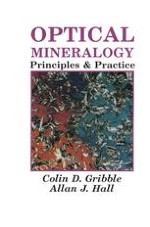This book is the successor to A practical introduction to optical mineralogy, which was written in the early 1980s, and published by George Allen & Unwin in 1985. Our intention, once again, is to introduce the student of geology to the microscopic examination of minerals, by both transmitted and reflected light. These techniques should be mastered by students early in their careers, and this text has been proposed in the full awareness that it will be used as a laboratory handbook, serving as a quick reference to the properties of minerals. However, care has been taken to present a systematic explanation of the use of the microscope, as well as to include an extended explanation of the theoretical aspects of optical crystallography in transmitted light. The book is therefore intended as a serious text that introduces the study of minerals under the microscope to the intending honours student of geology, as well as providing information for the novice or interested layman.
